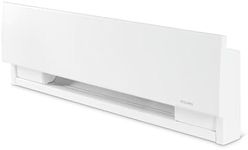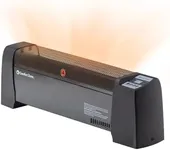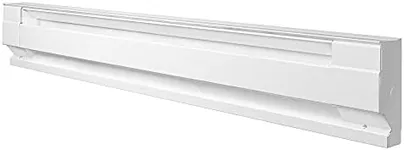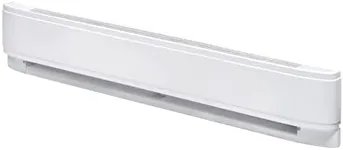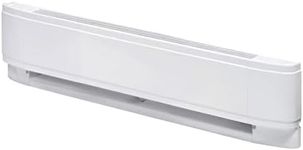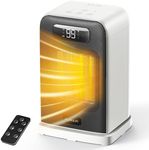Buying Guide for the Best Electric Baseboard Heaters
Choosing the right electric baseboard heater is all about matching the heater’s capabilities to your room size, comfort preferences, and installation needs. Electric baseboard heaters are a popular choice for supplemental or whole-room heating because they are quiet, easy to install, and allow for zoned heating. To make the best choice, you’ll want to understand the key features and specifications that affect performance, efficiency, and usability. By focusing on these aspects, you can ensure your new heater will keep your space warm and comfortable without unnecessary hassle.Wattage (Power Output)Wattage tells you how much heat the baseboard heater can produce, usually measured in watts. This is important because it determines how large of a space the heater can effectively warm. Lower wattage heaters (around 500-750 watts) are suitable for small rooms or as supplemental heat, while mid-range (1000-1500 watts) work well for average-sized bedrooms or offices. Higher wattage units (up to 2000 watts or more) are best for larger rooms or open areas. To pick the right wattage, consider the size of your room—generally, you’ll need about 10 watts per square foot of space. If your room is poorly insulated or has high ceilings, you may want to choose a slightly higher wattage.
Length of HeaterThe length of the baseboard heater affects both its heat output and how it fits in your room. Longer heaters can spread heat more evenly and are often needed for higher wattages. Shorter heaters are easier to fit in tight spaces but may not provide as much warmth. When choosing, measure the available wall space and consider where furniture is placed, as heaters need clearance to work safely and efficiently. Pick a length that fits your room layout and matches the wattage you need.
VoltageElectric baseboard heaters come in different voltage options, typically 120V or 240V. Voltage affects how the heater is wired and how much power it can deliver. 120V heaters are easier to install in most homes and are suitable for smaller rooms, while 240V heaters are more efficient for larger spaces and require special wiring. To choose the right voltage, check your home’s electrical setup and the size of the area you want to heat. If you’re unsure, consult an electrician.
Thermostat CompatibilitySome baseboard heaters come with built-in thermostats, while others require a separate wall-mounted thermostat. A thermostat lets you control the temperature and maintain comfort without wasting energy. Built-in thermostats are convenient for single rooms, but wall thermostats offer more precise control and can manage multiple heaters. Decide if you want simple, direct control or more advanced features like programmable settings, and make sure the heater you choose is compatible with your preferred thermostat type.
Safety FeaturesSafety features like overheat protection, tip-over switches, and cool-touch exteriors are important for preventing accidents, especially in homes with children or pets. Overheat protection automatically shuts off the heater if it gets too hot, while cool-touch surfaces reduce the risk of burns. When choosing a heater, look for models with these safety features if you have safety concerns or plan to use the heater in high-traffic areas.
Material and Build QualityThe material and build quality of a baseboard heater affect its durability, efficiency, and appearance. Heaters made from high-quality metals like aluminum or steel tend to last longer and distribute heat more evenly. Cheaper materials may not hold up as well over time. If you want a heater that will last and look good in your space, pay attention to the build quality and finish.
Noise LevelMost electric baseboard heaters are very quiet, but some may produce slight clicking or expansion noises as they heat up and cool down. If you’re sensitive to noise or plan to use the heater in a bedroom or study, look for models that are specifically described as silent or ultra-quiet. Reading user reviews can also help you gauge real-world noise levels.
